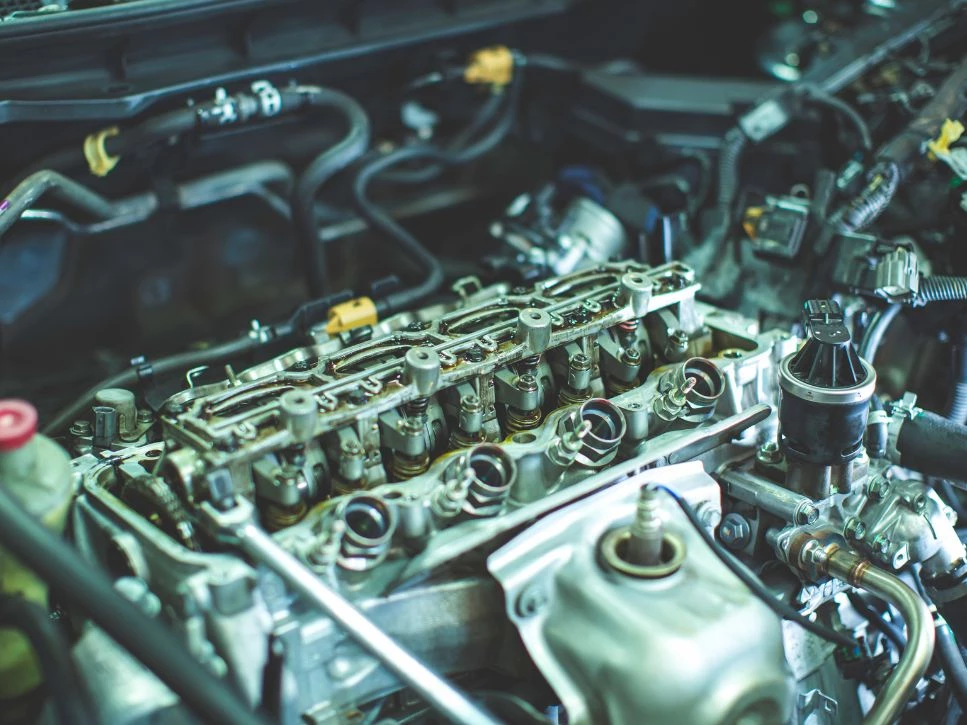
A Quick Overview
| Causes of Crankshaft Sensor Failure | Explanation |
|---|---|
| 1. Electrical Connection Issues | Loose or corroded wiring connections can disrupt signal transmission. |
| 2. Physical Damage | Physical damage to the sensor, such as impact or excessive heat, can cause failure. |
| 3. Oil or Coolant Contamination | Contaminants can interfere with sensor operation and accuracy. |
| 4. Wiring Harness Problems | Damaged or frayed wiring harnesses can lead to signal disruption. |
| 5. Engine Misfires | Frequent engine misfires can put excessive strain on the sensor and lead to failure. |
| 6. Excessive Vibration or Shock | Intense vibrations or shocks, often caused by rough driving conditions, can damage the sensor. |
| 7. Improper Installation | Incorrect installation, such as improper alignment or insufficient clearance, can impact sensor performance. |
The crankshaft sensor plays a crucial role in ensuring proper engine operation. It provides the ECU with critical data necessary for accurate fuel injection and ignition timing. When the crankshaft sensor fails, it can result in engine misfires, rough idling, and even a no-start condition. Understanding the potential causes of crankshaft sensor failure can help diagnose and address these issues promptly.
Reasons for Crankshaft Sensor Failure
Here are the top reasons that might cause a crankshaft sensor to fail:
1. Electrical Issues
Electrical issues are a common cause of crankshaft sensor failure. Problems such as wiring harness damage, loose or corroded connectors, or faulty power supply can disrupt the sensor’s ability to transmit accurate signals to the ECU. These electrical issues can result in intermittent or complete loss of signal from the crankshaft sensor, leading to engine performance problems.
2. Mechanical Damage
Mechanical damage to the crankshaft sensor can occur due to various reasons. For example, a misaligned or damaged reluctor ring on the crankshaft can cause the sensor to malfunction. Additionally, physical damage from impacts, excessive vibration, or incorrect installation can lead to the failure of the sensor. It is important to handle and install the crankshaft sensor with care to avoid mechanical damage.
3. Heat and Vibration
Crankshaft sensors are exposed to high temperatures and vibrations within the engine compartment. Prolonged exposure to heat and excessive vibrations can cause the sensor’s internal components to deteriorate over time. The resulting wear and tear can lead to sensor failure, affecting the accuracy of the signal sent to the ECU.
4. Contamination
Contamination is another factor that can cause crankshaft sensor failure. The sensor can become contaminated by oil, dirt, debris, or engine coolant, which can interfere with its operation. Contamination can result from oil or coolant leaks near the sensor or from environmental factors. Regular engine maintenance, including addressing leaks promptly, can help prevent sensor contamination.
5. Wiring and Connector Problems
Issues with the wiring or connectors associated with the crankshaft sensor can also contribute to its failure. Damaged or frayed wires, loose connections, or corroded terminals can disrupt the flow of electrical signals, leading to sensor malfunctions. Regular inspection and maintenance of the sensor’s wiring and connectors can help identify and resolve any issues before they cause sensor failure.
What is a crankshaft sensor?
A crankshaft sensor is an electronic device that monitors the rotational speed and position of the crankshaft in an internal combustion engine. It is responsible for communicating this information to the engine control module (ECM) which then manages various engine functions such as fuel injection, ignition timing, and other critical parameters.
How does a crankshaft sensor work?
A crankshaft sensor typically uses a magnetic or optical sensor to detect the rotation of the crankshaft. The sensor sends a signal to the ECM which interprets the signal to determine the engine’s position and adjusts the fuel injection and ignition systems accordingly.
What are the common symptoms of a failed crankshaft sensor?
A failed crankshaft sensor may cause a variety of symptoms, including stalling, poor acceleration, rough idle, and difficulty starting the engine. In some cases, the Check Engine light may also be illuminated.
What are the top reasons for a crankshaft sensor failure?
The most common causes of a crankshaft sensor failure include mechanical damage, electrical issues, wiring problems, and sensor contamination. Additionally, exposure to extreme temperatures, vibrations, and corrosive elements may also contribute to sensor failure.
Can a faulty crankshaft sensor damage the engine?
While a failed crankshaft sensor is unlikely to cause direct damage to the engine, it can lead to a variety of issues such as poor performance, decreased fuel efficiency, and increased emissions. If left unaddressed, it could also cause further damage to other engine components.
How can I diagnose a failed crankshaft sensor?
Diagnosing a failed crankshaft sensor typically involves using a diagnostic scanner to read the error codes and performing a visual inspection of the sensor and its wiring. In some cases, specialized equipment may be required to accurately diagnose the issue.
Can a crankshaft sensor be replaced at home?
Replacing a crankshaft sensor is generally not a DIY job as it requires specialized tools and knowledge. It is recommended to bring your vehicle to a trusted mechanic or dealership for replacement to ensure proper installation and calibration.






